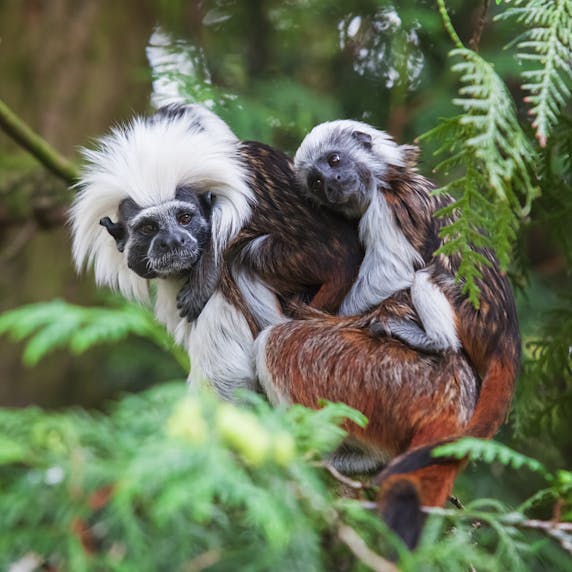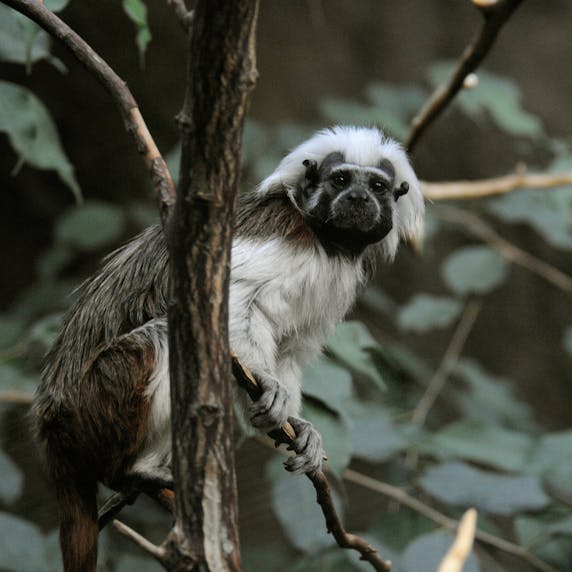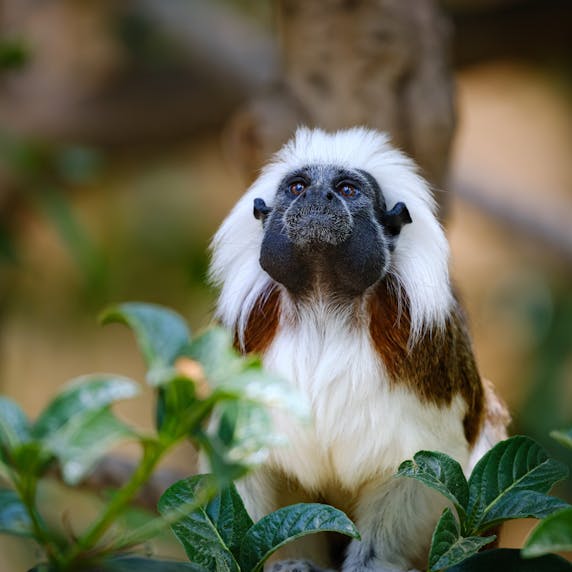
In the deep rain forests of Colombia, tiny monkeys jump from branch to branch in search of food. The cotton-top tamarin is a rare sight: it is now one of the 25 most endangered monkey species in the world. Rotterdam Zoo is therefore helping to let the numbers of these little climbers rise again.
Saguinus oedipus

24 years
23 centimeters
20.8 - 25.9 centimeters
500 grams
Cotton-top tamarins are small monkeys with a distinctive white bunch of hair on top of their head, which they owe their name from. They have a brown back and white legs, with dark-colored hands. In appearance, there is little difference between males and females. Cotton-top tamarins live in groups of up to about thirteen animals, with one pair in charge. The other animals help to protect and raise their young.
Cotton-top tamarins naturally occur throughout a small area in northwestern Colombia. There they live high up in the trees in dense rainforests, dry forests and forest edges.

The cotton-top tamarin plays an important role in its habitat. It eats many parts of trees and plants, including the seeds. These seeds are difficult for the cotton-top tamarin to digest, so the monkey defecates the seeds whole. In the meantime, the cotton-top tamarin has moved to a different place from where it ate. This way, different plant and tree species are spread throughout the rainforest and their numbers also increase again, maintaining their habitat.

The rainforests where the cotton-top tamarins live have decreased tremendously in size. Today, only 5% of the original forest remains. Nowadays, the cotton-top tamarin occurs only in protected areas and reserves. But even in these protected areas, cotton-top tamarins are captured. This is because many people mistakenly think they are suitable as pets. Because of both these threats, the number of cotton-top tamarins in the wild has declined sharply.

To combat the illegal capture of cotton-top tamarin, Rotterdam Zoo supports Fundación Proyecto Tití. This foundation works with the Colombian population to give these monkeys back their habitat and prevent people from catching them as pets. From this, the foundation also buys up pieces of land to make protected nature reserves. They also map the numbers of cotton-top tamarins throughout Colombia in order to investigate whether the numbers are increasing and where the most protection is still needed.
The cotton-top tamarins have a heated enclosure in the Oceanium. There are branches and ropes hanging over which they can climb. Between the plants and in the tree trunk in the middle of the enclosure they have many places where they can hide. The cotton-top tamarins are fed some vegetables, fruits and special dough balls with vitamins and minerals every day. This way they get all the important nutrients they need.


